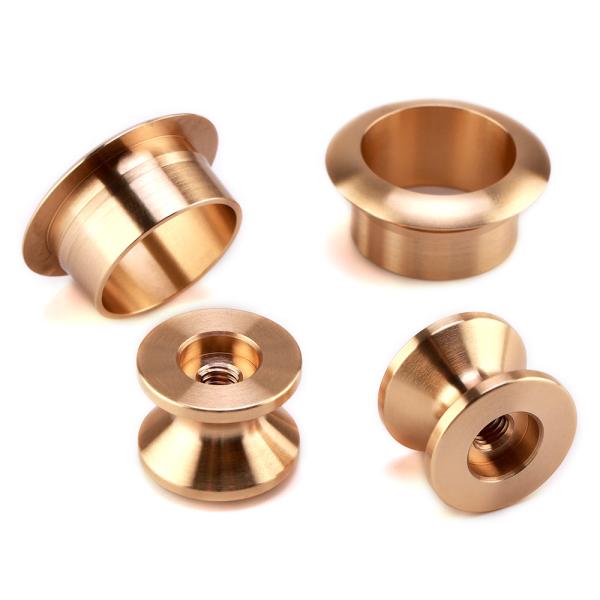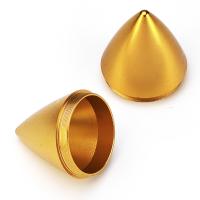| Sign In | Join Free | My himfr.com |
|
| Sign In | Join Free | My himfr.com |
|
| Ask Lasest Price | |
| Brand Name : | Zhong wei |
| Model Number : | OEM/ODM |
| Certification : | ISO9001:2015, ISO13485:2016 |
| Price : | Negotiate based on price between both parties |
| Payment Terms : | L/C, D/A, D/P, T/T, Western Union, MoneyGram |
| Supply Ability : | 10000Pcs/ Month |
| Delivery Time : | 6-15 days |
CNC (Computer Numerical Control) brass parts are widely used in various industries and fields, and their main functional uses include:
Fluid control: Brass is often used to manufacture fluid control equipment such as valves, faucets, and pipe connectors due to its good corrosion resistance and electrical conductivity.
Electronic and electrical connectors: Brass parts are used to manufacture various electronic and
electrical connectors, contactors, terminals, etc., because they
have good electrical conductivity and are not easy to rust.
Decorative parts: Brass has a beautiful luster and is often used to make various
decorations, such as home decoration, artwork, etc.
Mechanical parts: In the mechanical industry, brass is used to manufacture
wear-resistant parts such as bearings, gears, screws, and nuts.
Instrument and meter parts: Brass parts are used to manufacture precision parts of various
instruments and meters, such as adjustment screws inside
instruments, parts of measuring instruments, etc.
Radiator: Due to its good thermal conductivity, brass is used to manufacture
radiators for heat dissipation of electronic products.
Mold manufacturing: In the mold industry, brass is used to manufacture various mold
parts due to its good cutting performance and certain hardness.
Ammunition and weapon parts: In the military field, brass is used to manufacture bullet
casings, shell casings and other weapon parts due to its toughness
and wear resistance.
Automotive parts: In the automotive industry, brass is used to manufacture fuel
system components, radiators, brake system components, etc.
Architectural hardware: Brass parts are widely used in architectural hardware such as door and window hardware, locks, and bathroom accessories due to their beauty and corrosion resistance.
CNC processing technology allows brass parts to be produced precisely according to design drawings, ensuring the accuracy and quality of the parts, thus playing an important role in the above-mentioned various applications.


Q1:Is your organization committed to the concept of total quality
management?
A: Yes, no matter whether in laser cutting, bending, or CNC
machining, QC will conduct the first sample inspection and random
inspection during the processing to ensure the quality of the
products.
Q2:How many checks are performed on a project?
A:Usually, products will go through the following four inspections:
incoming inspection, production first inspection, sampling
inspection, and pre-shipment inspection. Among them, sampling
inspection will be conducted multiple times
Q3:Will you be able to work with our engineering team to review
drawings and provide quick, estimated pricing for desired changes?
A:Yes, our engineers respond very quickly. If there is anything to
be modified in the product, we can offer you a new price as soon as
you tell us.
Q4: What kinds of information do you need for a quote?
A: Kindly please provide the product drawing in PDF, and will be
better if you can provide it in .dwg / .stp /. igs / .stl , Send
drawing
Q5:What tolerances can SIWUYA achieve?
A:There is not a given set of tolerances that fits all processes
and materials. In every case, the final tolerances on your part
will depend on a number of factors, including but not limited to:
●Part size
●Design Geometry
●The number, type, and size of features
●Material(s)
●Surface finish
●Manufacturing process Once your
order is confirmed, we will review your design and provide a design
for manufacturing review, pointing out any areas where we may not
be able to achieve your desired tolerances. It’s helpful if you can
specify which areas in your design have critical tolerances that
must be met and which can be slightly modified if needed to reduce
the time and costs involved. Here are some general tolerance
guidelines: General tolerances for CNC machining in metal and
plastic Refer to DIN ISO 2768 All manufacturing and technical
specifications need to be clearly specified in the 2D drawings in
order to be followed.
Q6:Will your company sign an NDA?
A:Yes, We will strictly follow the confidentiality agreement to
protect the rights and interests of our customers
Q7: OEM/ODM customer’s logo printed is available?
A: YES, OEM/ODM, customer’s logo welcomed.
Q8: if we don’t have a shipping forwarder in China, would you do
this for us?
A:We can offer you the best shipping line to ensure you can get the
goods timely at the best price.

|




